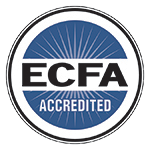Using a Method to Share the Gospel: Relational or Robotic?
Conversations about Christ with unbelievers can be challenging. One of the main reasons is that you never know when an opportunity might present itself, especially when you least expect it.
Learning a method of sharing the gospel helps you prepare for the unpredictable. It involves having a basic outline of what you might say and how you are going to say it including the essential elements of the gospel, scripture references, transitions, and illustrations.
However, if we are not careful, using a method can come across as trite, superficial, and even robotic.
The key with using a method is to find the right balance between being prepared and coming across as programmed. That said, here are a few thoughts on how to find that balance.
1. Use a method like a roadmap, not a script.
One of the main reasons I dislike getting telemarketing calls is that I can tell someone is reading a teleprompter for what to say. I can tell the caller is motivated by obligation and that I am just a number on a screen rather than a person. No one likes to be “talked at”, bypassing the natural flow of a conversation. The same holds true for the people with whom we share the gospel.
While a method should not be used as a script, it can be a helpful roadmap providing main points, verses, and potential transitions and illustrations to use. It gives you a basic structure so that if the person asks an unexpected question or pursues a side topic, you have a point of reference in your outline to which to return.
2. Learn multiple methods to share the gospel.
Using a method is a great way to keep the conversation on track and make sure you present the essential elements of the gospel. However, trying to apply the same exact method for everyone you meet is not wise or Biblical.
Jesus proclaimed the same message throughout His ministry, but the methods He used to share that message varied. Jesus used a well and “living water” with the woman at the well in John 4, yet He used the story of the bronze serpent with Nicodemus in John 3. Jesus recognized that people have different backgrounds, personalities, learning styles, and felt needs. He strove to meet them where they were in a way they could follow and understand. We should do the same by having a ready supply of biblical methods, transitions, and illustrations to use as prompted by the Holy Spirit.
3. Make your goal moving the person closer to Christ rather than on just getting through the presentation.
One of the traps of learning a method is that we feel like we need to present the entire method to be successful. When that happens, evangelism can become more of a sermon than a conversation, more monologue than dialogue.
People desire to be heard and want a chance to discuss and process new ideas. Whatever method you use, make sure you leave room for the person’s response to ensure that the person is tracking through each point of your method. You may or may not get through your entire presentation, but the Lord may use you to direct the person to consider a claim of Christ in a fresh way, dispel a stereotype or false belief, and/or whet their appetite to hear more.
4. Don’t get stuck in a rut.
Our God is a creative God. We need to constantly depend on Him to lead us to creative ways to share the good news. For example, missionaries in Japan were at a standstill trying to communicate the gospel to others. No matter how many times they used the “tried and true” methods with the Japanese, nothing worked.
Finally, they experienced a breakthrough when one of the missionaries came up with a new way to communicate the gospel called “the bridge to life.” It was an extremely effective new method to reach the Japanese and now is used worldwide today.
My point here is not so much the effectiveness of the bridge method, but that the missionaries were open to a fresh way to share a timeless truth, the good news of Jesus Christ!
Watch the Video Series
Contact Us
(214)265.9800
evantell@evantell.org
PO Box 703929
Dallas, TX 75370-3929

